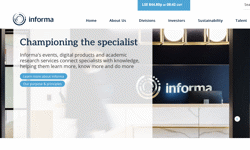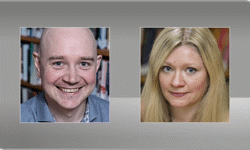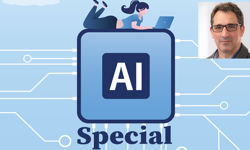
Where is the scientific / academic media sector now on the digital transformation journey?
In contrast to other media sectors, where registration, subscription packages and paywalls are the direction of travel, Sara Sharman, head of content services at the Institution of Engineering and Technology says open access is the way forward for scientific and academic media.
She says: “Open access became a movement in the early 2000s, driven by funding bodies who were increasingly mandating that research paid for by public monies was made freely accessible. Publishers began to respond to this by offering open access publication routes in their subscription-based journals while beginning to launch new, completely open access journals. The IET also adopted this approach in line with market demand but as of January this year, we pivoted completely to open access for our journals programme. We moved away from subscription models and towards making our research as open and freely available as possible. That I think is the major change in the scholarly research sector which sets it apart from other media sectors.”
With the open access model, the author pays to publish in a journal through a fee called the article processing charge. In many cases, these fees are supported through an author’s research grant or, in some instances, there may be country-level arrangements in place where the fees are covered through a central fund. To support the transition to open access, the IET has formed a commercial partnership with a large institution which specialises in making academic journals available via open access. Sharman explains: “We are the first learned society that has done this pivot to open access. It was a big challenge to move away from the subscription approach, but we felt it was the right thing for us and we feel we’ve really led the way in the industry in terms of engineering and technology. Open access is transforming the process of research and scientific publishing, but its ethos also closely aligns with the IET’s cultural values and vision to facilitate the widest possible access to knowledge and research to support the resolution of societal challenges. I think this will resonate with a lot of learned societies who are finding the transition to open access inevitable. You can either embrace it and move with it early, or you’re going to be left behind.”
Key milestones
- Open access is a key change for academia.
- Analytics: gaining deeper insights from the information is as valuable as the content. We’ve needed the recent change in computing power to give us that ability to query the content. Additionally, if content isn’t structured properly, then being able to reuse it becomes much more difficult.
Lessons learnt
- We’ve led the way in open access; on the journal side, we took a big strategic decision to make that pivot early and take the risk that’s involved with that.
- Being able to move fast enough in the market. With the Inspec family of products that we’re building, how quickly can we deliver those to market? That’s always going to be the challenge for everybody.
Where does scientific / academic media need to get to and how do they get there?
Continuing to grow their open access programme and creating new products that enable analytics is important to the IET’s core mission, believes Sharman. She says, “One of the IET’s mission statements is to get engineering knowledge out there. The reason we create products is to deliver on our royal charter to get people interested in engineering; being able to invest more in that is important for us.”
Academic publishers also need to keep the end user in sight, she argues. “Our customer might be head of faculty at an institution, or it might be a research company, but if we can provide products and services to help them with workflow, that’s what we’re looking to move towards. The more we can become integral to their processes, that’s how we move forward.”
What does the future hold?
The IET’s database, Inspec, is one of the most definitive for subject-specific and interdisciplinary research. It has been in existence since 1969 and now has over 20 million records of research literature. The key direction it is moving in now is towards analytics and metadata.
Sharman explains: “We’re focusing more now on the analytics side and thinking about the customer journey and what research tools they might need. The metadata and information about the article has become as valuable as the article itself. We can provide insights for our customers. So, for example, if I’m looking at a particular subject, where is it mostly published, which country and what institution, where are all the specialists based in this subject? Something that would have taken significant hours for people to search for and find, they can now use the products we’re building on top of our Inspec product. That’s where the growth is. It’s still quite small, but the market spend is moving towards analytics.”
Scientific / academic media SWOT
STRENGTHS:
Strong demand for content being made available through open access models.
WEAKNESSES:
Not easy for publishers to manage the shift from subscriptions to open access payment models.
OPPORTUNITIES:
Advances in metadata capture and data analytics that enable products and services to be offered that potentially save time in the scientific community’s research workflow.
THREATS:
Some publishers are not able to react fast enough to users and the market’s evolving needs and expectations.
This article is part of our special feature on The Digital Transformation Journey, originally published in April in conjunction with The Publishing Show. The feature contains the following six articles:
National news media, with Dominic Carter
Regional news media, with David Higgerson
Consumer media, with Jess Burney
B2B media, with John Barnes
Customer media, with Ann Hartland
Scientific / academic media, with Sara Sharman










